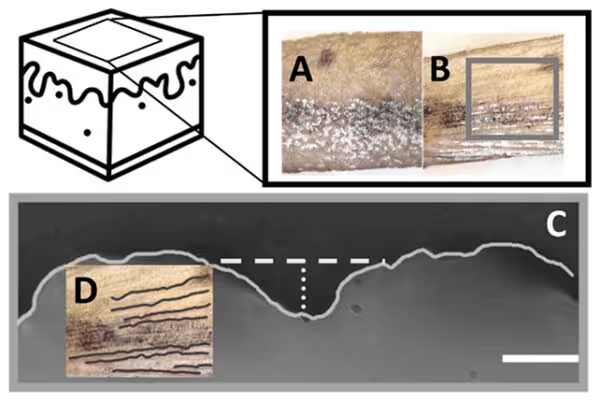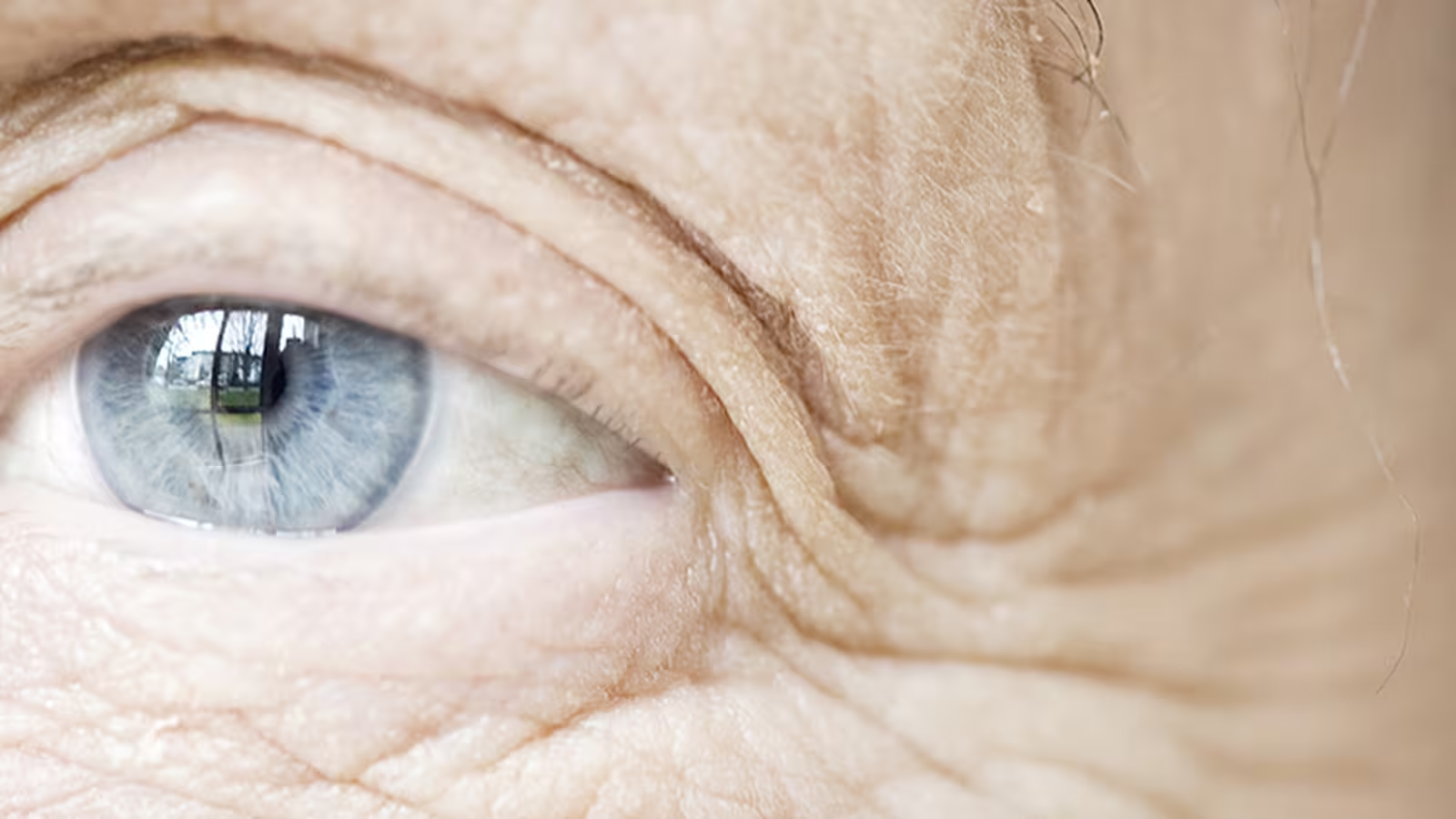4 Minutes
A new study from Binghamton University offers experimental evidence for a long-held hypothesis: repeated directional stretching and releasing of skin produces mechanical strains that lead to wrinkles as we age. By testing human skin samples from donors aged 16 to 91, researchers identified a physical mechanism — analogous to creasing in denim — that explains why lines such as crow's feet deepen over time. Biomedical engineer Guy German summarized the advance: "This is no longer just a theory. We now have hard experimental evidence showing the physical mechanism behind aging." The findings clarify how age-related changes in skin mechanics and fluid transport produce buckling and permanent creasing.
Methods and experimental setup
To reproduce the everyday mechanical wear experienced by skin, the team applied controlled stress to ex vivo human samples using a low-force tensometer. This instrument stretches tissue gently while a microscope records microstructural responses. The samples came from a broad age range to capture progressive alterations in tissue behavior across the lifespan.
The tensometer protocol was designed to simulate repetitive directional motion — for example, the lateral contractions around the eyes that accompany smiling and squinting. Researchers observed the immediate mechanical response and then examined post-test microstructure to detect buckles, separations, and changes in layer stiffness.
Key findings and physical mechanism
The experiments produced several interrelated discoveries that together explain wrinkle formation:
- Directional strain and buckling: Repeated unidirectional stretching increases contraction magnitudes in aged samples. When contraction exceeds a threshold, the skin surface buckles, producing visible creases. This behavior mirrors how repeated bending creates a permanent fold in fabric.
Layer-specific mechanical changes
- Outer layer stiffening: The stratum corneum (outermost epidermis) becomes stiffer with age.
- Subepidermal softening: Deeper dermal tissues soften as the collagen network that provides tensile support loses density and organization. These opposing stiffness trends create mechanical mismatch through the skin thickness, promoting instability and surface wrinkling under load.
- Poroelastic volume loss: The team documented that skin gradually expels fluid when stressed, a behavior described as poroelasticity. Over time this fluid loss reduces local volume, amplifying the effect of mechanical buckling and making wrinkles more pronounced. According to German, "If you stretch Silly Putty, for instance, it stretches horizontally, but it also shrinks in the other direction — it gets thinner. That's what skin does as well." As contraction increases with age, excessive thinning and buckling follow, producing permanent lines.

Implications for dermatology, modeling and skincare science
This work extends beyond explaining cosmetic changes. A clearer mechanical model of aging skin can help:
- Improve diagnoses and treatments for mechanical or structural skin disorders by linking tissue mechanics to pathology.
- Provide objective metrics to evaluate anti-aging products and interventions (topical agents, fillers, or mechanical treatments) by comparing how they modify stiffness, collagen density, or poroelastic behavior.
- Inform computational models and tissue engineering. The study suggests that similar buckling mechanics could apply to other biological surfaces — for example, folding patterns in neural tissue — enabling cross-disciplinary modeling between dermatology and neuroscience.
The researchers also emphasize environmental contributors: cumulative ultraviolet (UV) exposure accelerates collagen degradation, so occupational sun exposure corresponds with more pronounced age-related wrinkling. "If you spend your life working outside, you're more likely to have more aged and wrinkled skin than those who are office workers, for example," German notes — reinforcing the role of sunscreen and photoprotection.
Future prospects and related technologies
Future research directions include in vivo mechanical imaging (e.g., optical coherence elastography), improved biomechanical models that couple poroelastic fluid transport and collagen remodeling, and high-resolution longitudinal studies to quantify how interventions alter the mechanical aging trajectory. Advances in micro-scale mechanical testing, wearable sensors, and machine-learning-based image analysis will also increase the accuracy of product claims and clinical assessments.
Conclusion
The Binghamton University experiments provide direct mechanical evidence that age-dependent changes in skin stiffness, collagen structure, and fluid dynamics produce buckling under repeated directional strain — the underlying cause of wrinkles. By framing wrinkles as a mechanical instability amplified by poroelastic volume loss and layer mismatch, this research offers a quantitative basis for prevention strategies, objective testing of anti-aging treatments, and broader applications in tissue modeling and regenerative medicine.
Source: sciencedirect



Comments